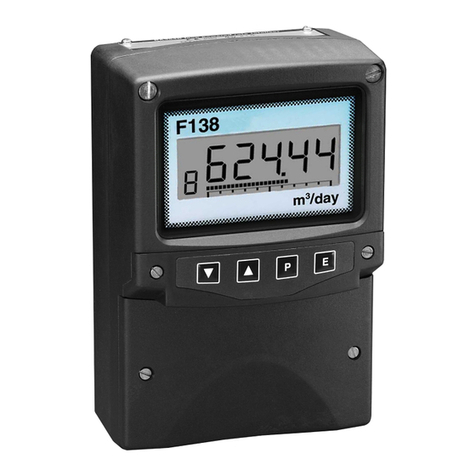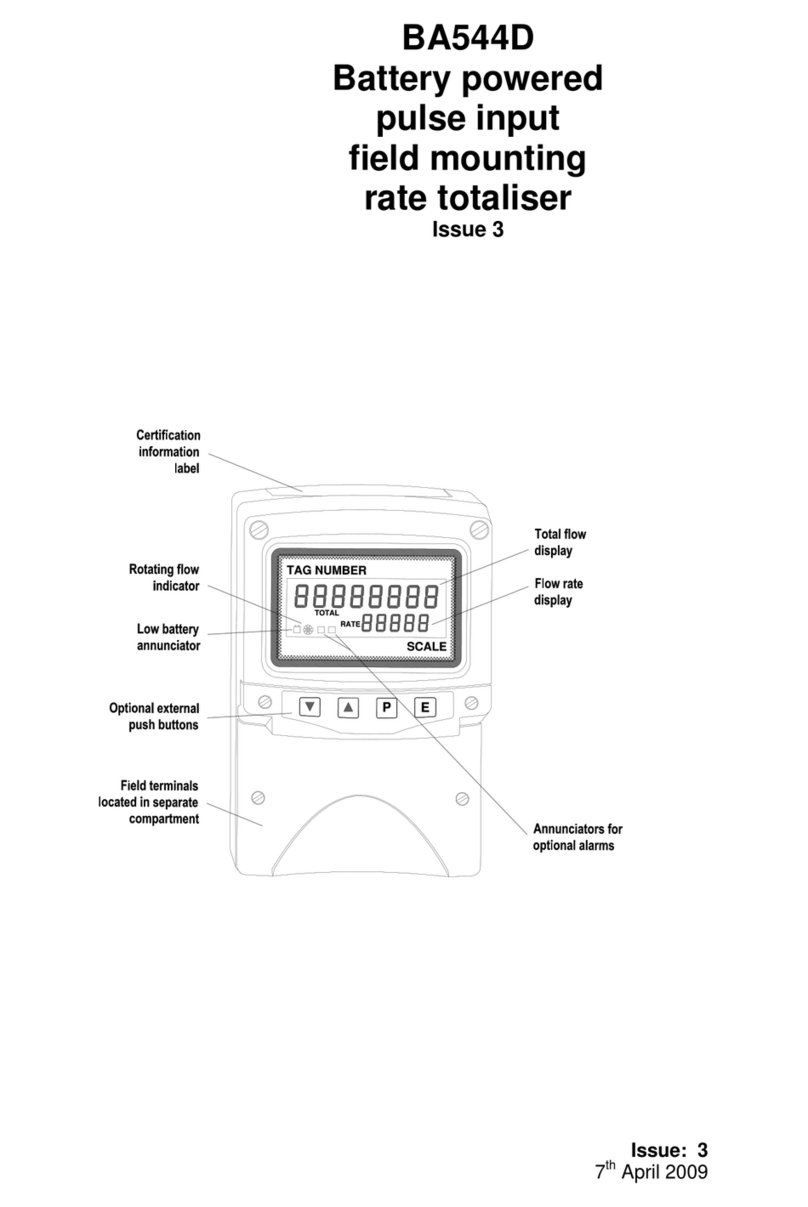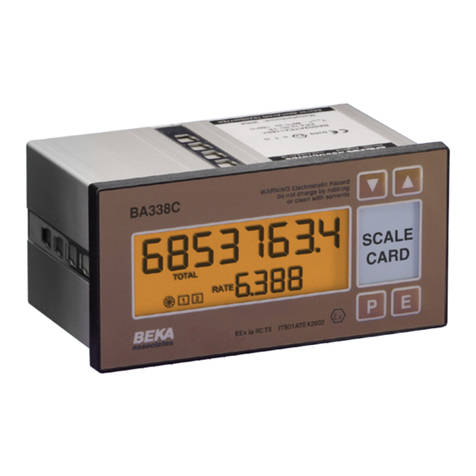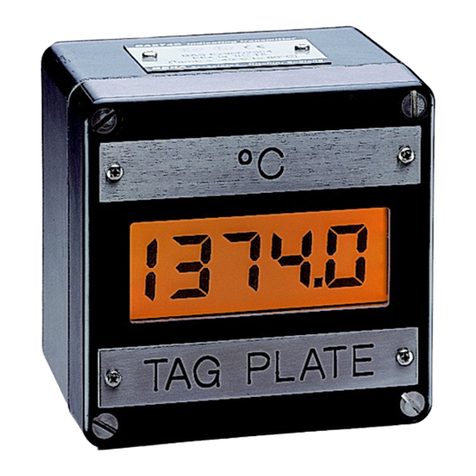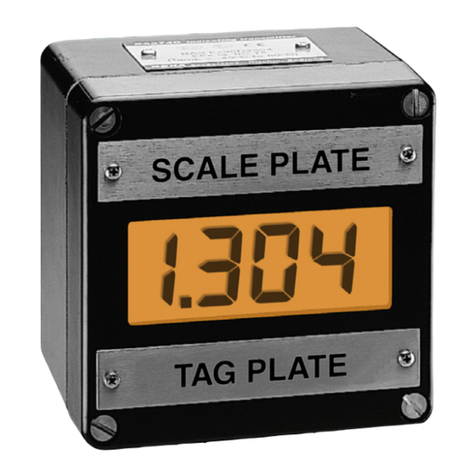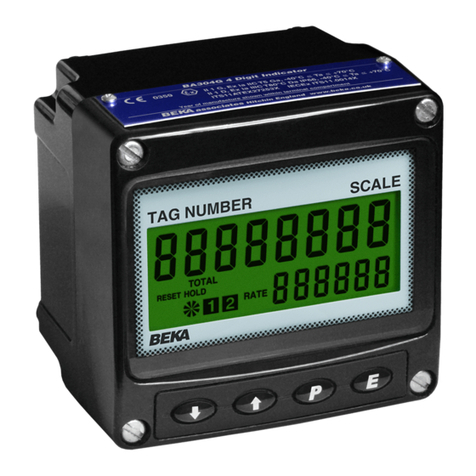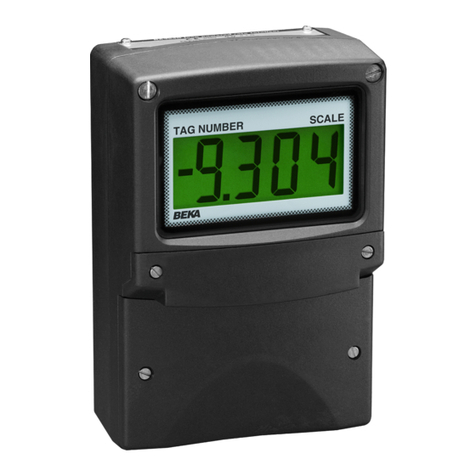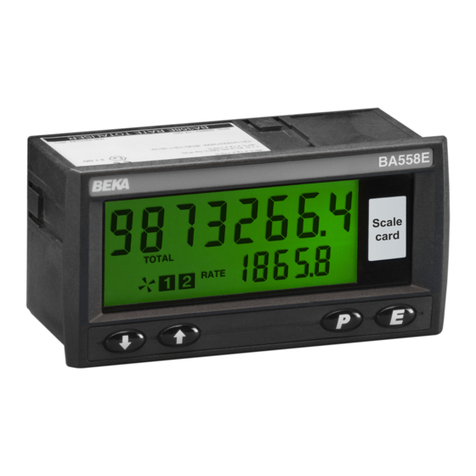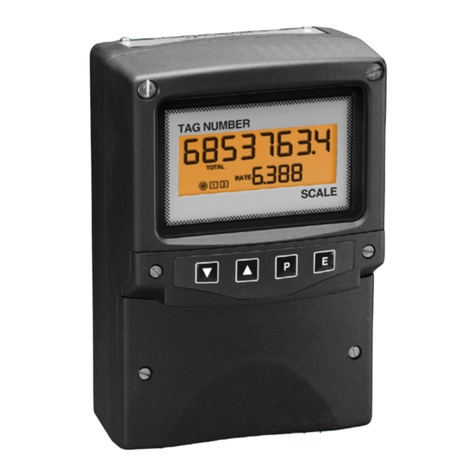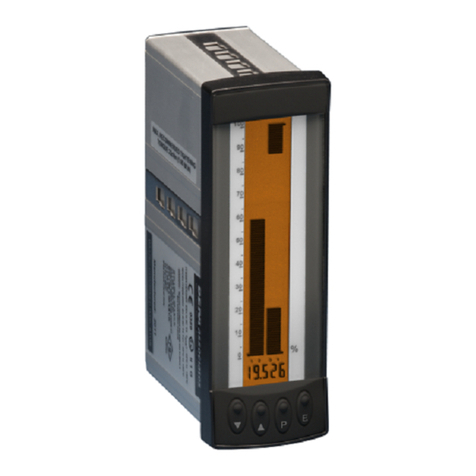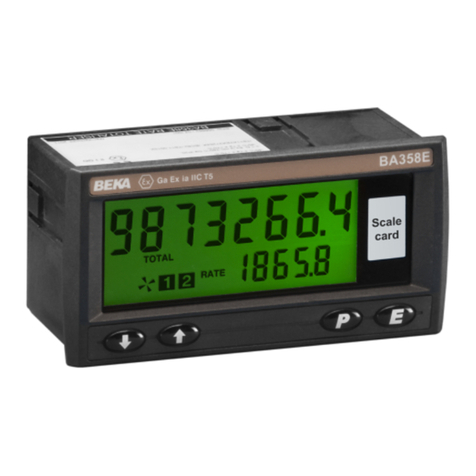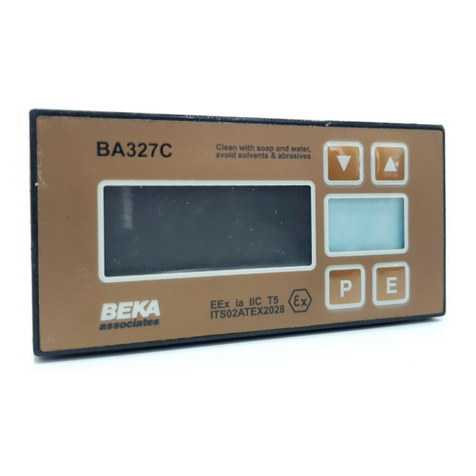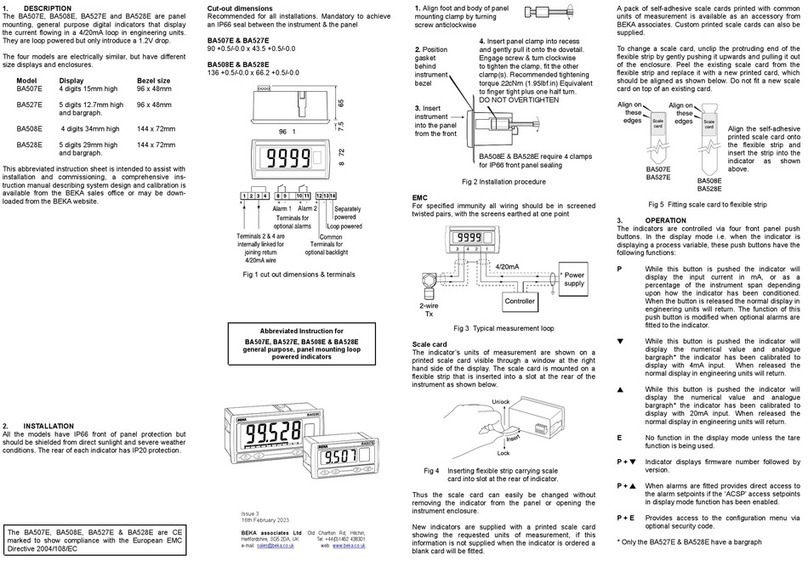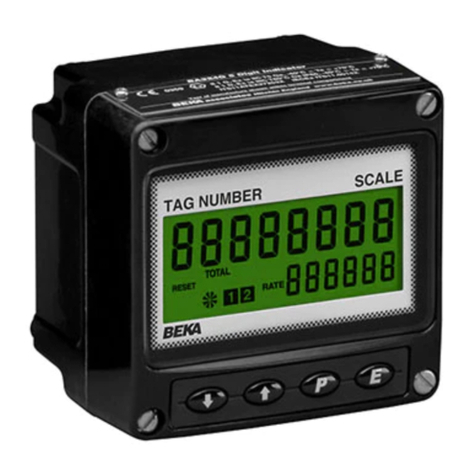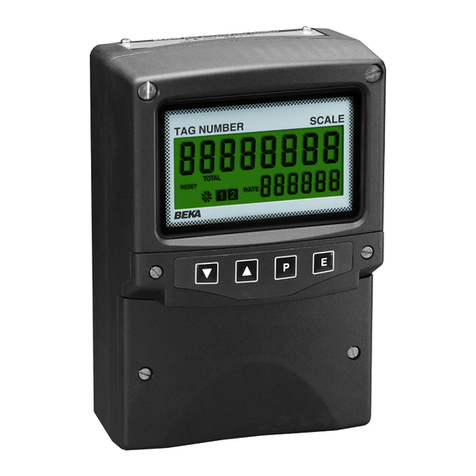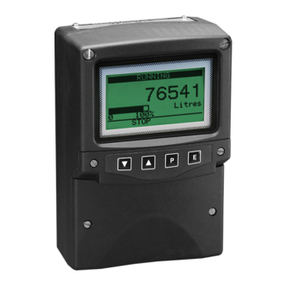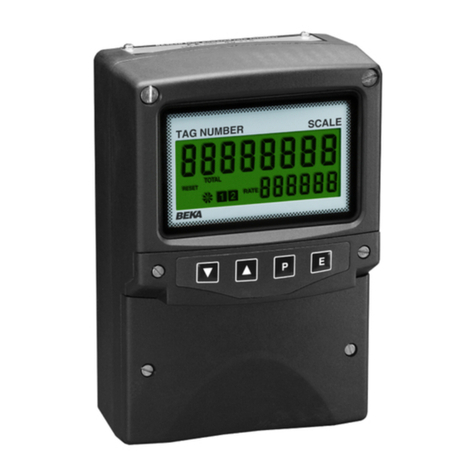
8
6. CONFIGURATION
The BA444NDF-P 8 variable PROFIBUS PA
indicator may be configured as a fieldbus node or
as a fieldbus listener. When used as a fieldbus
node the indicator is configured via the fieldbus
host although the instrument address may be
entered via the front panel push buttons using the
menu shown in Fig 4. For detailed node
conditioning information please refer to the BEKA
PROFIBUS PA Display – Fieldbus Interface Guide
which may be downloaded from the BEKA website
www.beka.co.uk
As a fieldbus listener, the BA444NDF-P is not
visible to the fieldbus host and can only be
configured via the front panel push buttons using
the menu shown in Fig 6.
Throughout this manual the four BA444NDF-P
push buttons are identified P E ▼▲and legends
displayed by the instrument are shown within
inverted commas e.g. ‘CodE’ and ‘Enb’.
6.1 Configuration menus
The configuration menus are separated into two
sections, fieldbus node and fieldbus listener. Both
contain the ‘tYPE’ function that enables transfer
between the two. Unless otherwise requested
when ordered, all PROFIBUS PA BA444NDF-P
instruments are supplied as a fieldbus node with
default configuration but can easily be reconfigured
on-site.
6.2 Node configuration menu
The node configuration menu is shown in Fig 4.
Access to the menu is obtained by operating the P
and Ebuttons simultaneously. If the BA444NDF-P
is not protected by an access code the first
parameter 'Addr’ will be displayed. If the
instrument is protected by an access code, ‘CodE’
will be displayed first. Pressing Pwill allow the
four digit security code to be entered digit by digit
using the ▼or ▲button to adjust the flashing digit
and Pto move control to the next digit. When the
correct code has been entered, pressing Ewill
cause the first parameter ‘Addr’ to be displayed.
If an incorrect code is entered, or no button is
pressed for ten seconds, the BA444NDF-P will
automatically return to the display mode.
6.2.1 Enter fieldbus address ‘Addr’
This function enables the fieldbus address of the
BA444NDF-P to be entered via the push buttons.
Select ‘Addr’ in the node menu using the ▼or ▲
button and press Pto enter the function. This will
reveal the existing three digit decimal address with
the left hand digit flashing which may be changed
by operating the ▼or ▲button.
When set as required operating the Pbutton will
transfer control to the next digit that may be
adjusted in the same way. When all digits are set
as required operating the Ebutton will enter the
new address and the indicator will restart in the
display mode after completing the initialisation
sequence. If the address is not changed,
operating the Ebutton will return the display to the
‘Addr’ prompt in the node configuration menu.
6.2.2 Access code for configuration menu
‘CodE’
Access to the node configuration menu may be
protected by a four digit security code which must
be entered to gain access. New instruments are
supplied configured with the default code 0000
which disables this protection and allows
unrestricted access to the configuration menu.
To enter a new access code select ‘CodE’ in the
node configuration menu by operating the ▼or ▲
button. To enter the function press Pwhich will
reveal the current access code with one digit
flashing. The code may be changed using the ▼or
▲button to adjust the flashing digit and the P
button to move control to the next digit. When the
required code has been selected, press Eto enter
the selection and return to the ‘CodE’ prompt in the
configuration menu. The revised access code will
be activated when the transmitter is returned to the
display mode. If the access code is lost please
contact BEKA associates.
6.2.3 Change from node to listener ‘tYPE’
This function enables the instrument to be
changed from a fieldbus node to a fieldbus listener.
Select ‘tYPE’ in the node configuration menu using
the ▼or ▲button. To enter the function press P
which will show that the instrument is configured
as a fieldbus node, to change to a fieldbus listener
press the ▼or ▲button which will toggle the
display to ‘LStnr’ To prevent accidental changes
this request must be confirmed by operating the P
button and entering ‘5urE’. The instrument will
display ‘0000’ with the first digit flashing, using the
▼or ▲button set the flashing digit to ‘5’ and press
the Pbutton to move control to the next digit which
should be set to ‘u’. When the four letters of ‘5urE’
have been entered, operating the Ebutton will
cause the instrument to restart as a fieldbus
listener in the display mode.
CAUTION
All the instrument’s node configuration
information will be lost when it is
changed from a fieldbus node to a
fieldbus listener.
Please refer to the quick set-up procedure in the
BEKA PROFIBUS PA Display – Fieldbus Interface
Guide.
